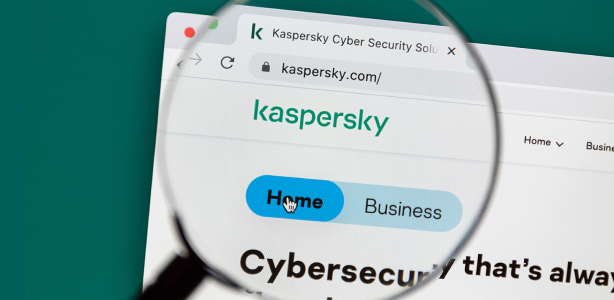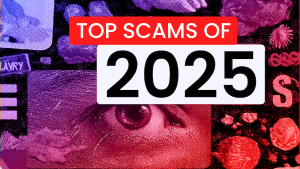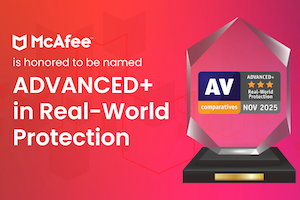Citing national security concerns, the U.S. Department of Commerce last June 2024 issued an immediate ban on the sale of all antivirus software by Russia-based Kaspersky Lab, Inc. in the United States or to U.S. persons. This ban also applied to Kaspersky’s affiliates, subsidiaries and parent companies, as well as to security updates that keep its protection current.
In its official statement, Kaspersky denied the allegations, proposing a “comprehensive assessment framework providing for the verification of its solutions, database updates, threat detection rules by an independent trusted reviewer.” The U.S., however, maintained the ban, warning that Kaspersky users had until September 29, 2024 to switch to new online protection software to stay protected from the latest threats.
To assist digital users with the switch, McAfee put together a quick Q&A to shed light on the pertinent points of the ban and help Kaspersky users find alternative online protection software.
FAQs: The Kaspersky and switching to a new security suite
Did the U.S. government ban the sale of Kaspersky?
Yes. The U.S. Department of Commerce issued a Final Determination, asserting that:
“The Department finds that Kaspersky’s provision of cybersecurity and anti-virus software to U.S. persons, including through third-party entities that integrate Kaspersky cybersecurity or anti-virus software into commercial hardware or software, poses undue and unacceptable risks to U.S. national security and to the security and safety of U.S. persons.”
(i) This news follows the 2017 ban on using Kaspersky software on government devices.
(ii) That ban alleged that Russian hackers used the software to steal classified materials from a device that had Kaspersky software installed.
(iii) Kaspersky has denied such allegations.
Why did the U.S. ban Kaspersky software?
The U.S. government enacted the Kaspersky ban, citing significant national security risks, as Kaspersky software has ties with Russia. U.S. officials are concerned that the Russian government could legally compel Kaspersky to provide sensitive data about its American customers or use its antivirus software’s deep system access to conduct espionage or launch cyberattacks. Antivirus software, by its nature, requires privileged access to a computer’s files, applications, and network traffic, making it a powerful tool if compromised.
This decision began in 2017 when Kaspersky software was initially banned from U.S. federal government systems. In June 2024, the Department of Commerce expanded this prohibition to all U.S. consumers and businesses, halting new sales and critically ending software updates after September 2024. For everyday users, this means the software will no longer be able to protect against new threats, making it imperative to find a secure alternative.
What global actions were undertaken against Kaspersky software?
The Kaspersky software ban in the United States is part of a larger trend of similar warnings and restrictions from several governments. For example, Germany’s Federal Office for Information Security warned consumers against using Kaspersky products shortly after the 2022 invasion of Ukraine, citing the risk of the Russian IT solutions provider being used for hostile actions. Similarly, Lithuania and the Netherlands phased out the software from their government and critical infrastructure systems, citing similar national security concerns. As a result, international travelers and remote workers using Kaspersky could be left digitally unprotected when connecting from countries with active warnings.
What are the alleged security risks linked to Kaspersky Software?
The fundamental Kaspersky software issues cited by security experts and government bodies go beyond simple software bugs. The primary risks for users include:
- Potential for government exploitation: The main concern is that the Russian government could force Kaspersky to cooperate in malicious activities, such as accessing sensitive user data or deploying malware through its updates. This poses serious risks to both privacy and national security.
- Cessation of security updates: Because all Kaspersky software updates for U.S. users were set to stop on September 29, 2024, users of the software would not receive daily patches, exposing their devices and information to viruses, ransomware, and other evolving cyber threats.
- Privileged system access: Antivirus software integrates deeply into your operating system to protect you. If the software itself is compromised, this deep access becomes a powerful point of entry for attackers to steal information, monitor your activity, or take control of your device.
- Supply chain integrity: The U.S. Commerce Department has identified the software’s supply chain as an unacceptable risk, because the process of creating and delivering the software could be compromised, potentially embedding vulnerabilities before it even reaches your computer.
Will I need new online protection software to replace Kaspersky software?
Yes. In addition to barring new sales or agreements with U.S. persons from July 20, 2024, the ban also applies to software updates. Like all online protection software, updates protect users from the latest threats. Without updates, the software leaves people increasingly vulnerable over time. The update part of the ban took hold on September 29, 2024, giving Kaspersky users roughly three months to get new online protection.
Is Kaspersky safe to use in 2025?
No, it is not safe to use Kaspersky software in the U.S., especially after the September 29, 2024 termination of security updates. Cybercriminals constantly create new malware, and without patches, your software will be unable to detect or block these emerging threats, making your computer an easy target for viruses, ransomware, and identity theft. Given this, the clear and urgent recommendation is to uninstall Kaspersky and switch to a trusted security provider to ensure your protection is not interrupted.
How do I remove Kaspersky software?
Removing any type of antivirus depends on your device. The links below lead to the following support pages that can walk you through the process:
Use the official removal tool for a clean uninstall
For a truly clean slate, we recommend using the official Kaspersky Removal Tool, also called “Kavremover.” Standard uninstallation can leave behind residual files, drivers, and registry keys that might conflict with your new security software. This complete Kaspersky removal guide ensures everything is gone.
To start, search for and download the Kavremover tool from Kaspersky’s official support website. For best results on a Windows PC, restart your computer in Safe Mode to ensure no Kaspersky processes are running. Then, simply run the tool, accept the terms, and let it automatically detect and remove all traces of the software. A final restart after the tool finishes will complete the process, leaving your system ready for a new, trusted antivirus solution.
What features should I consider when looking for online protection?
Today, you need more than antivirus to keep you safe against the sophisticated threats of today’s digital age. You need comprehensive online protection that secures your devices, identity, and privacy against hackers, scammers, and thieves.
Comprehensive also means your software continues to evolve, proactively rolling out new features as new threats appear, such as:
- Text scam detector that protects you against the latest scams via text, email, QR codes, and social media. Should you accidentally click, web protection blocks sketchy links that crop up in searches and sites.
- Social privacy manager that helps you adjust more than 100 privacy settings across your social media accounts in a few clicks. Aside from YouTube, we also protect privacy on TikTok, making us the first service to protect users on that platform. That means we now cover the top two platforms that teens use, TikTok and YouTube.
- AI-powered protection. Our U.S.-based, AI-driven award-winning protection blocks the latest threats while providing 3x faster scans with 75% fewer processes running on the PC, as tested by independent labs like AV-Comparatives.
A trusted, integrated alternative
Our solution offers you and your family a single, easy-to-use protection that effectively blocks malware and zero-day attacks; system performance that ensures protection without slowing down your computer; privacy policies that scrutinize how websites handle your data; and overall features for value, including tools like virtual private networks, identity monitoring, and password managers.
Just as importantly, trust is paramount when choosing from software alternatives. As a U.S.-based company with over 30 years of cybersecurity leadership, McAfee goes beyond traditional antivirus solutions with AI-powered threat detection and a comprehensive suite of tools to protect your identity and privacy.
How do I stay protected after removing Kaspersky?
Once you have uninstalled Kaspersky, it is crucial to take immediate steps to secure it. Follow this checklist to ensure your digital life remains safe:
- Consider a trusted security solution: Choose one that gives you a reliable, proven, and comprehensive suite of tools to protect your identity and privacy,
- Install your chosen security suite: Your top priority is to install one of the reliable software alternatives, like McAfee Total Protection. This immediately restores your defense against viruses, malware, and other online threats.
- Activate built-in OS protections: While you install your new software, ensure your device’s native security features, such as Windows Security or macOS’s XProtect, are enabled as a temporary safety net.
- Update everything: Make sure your operating system (Windows, macOS, Android, iOS) and all of your applications are fully updated. These updates often contain critical security patches that protect against known vulnerabilities.
- Run a new system scan: After installing your new security software, perform a complete system scan to ensure no threats were missed during the transition period.
- Backup your important data: Proactively and regularly back up your critical documents, photos, and other files to a secure cloud service or an external hard drive.
- Enable multi-factor authentication (MFA): Add an extra layer of security to your important online accounts, such as email and banking, by enabling MFA.
- Use a password manager: Secure your accounts with strong, unique passwords for every site, managed easily through a password manager.
- Schedule regular scans: Configure your new security software to run regular, automatic scans to maintain ongoing protection.
Will I get a refund for my Kaspersky subscription?
You will need to contact Kaspersky customer support directly to inquire about their refund policy in light of the ban. Policies can vary, so checking with the source is the best course of action.
What happens if I don’t make the switch?
The U.S. government strongly recommends switching immediately due to the identified national security risks. In addition, not switching or installing a new online security solution leaves you unnecessarily exposed. It is far safer to make the switch.
Can I run two antivirus programs at once?
No, you should never have two antivirus programs installed on one device. There is a possibility that they will conflict, causing system slowdowns, crashes, and can even lower your overall security. Always fully uninstall one before installing another.
What about my data that Kaspersky has already collected?
This is a key element of the concerns surrounding the ban. While it’s impossible to retrieve data that has already been collected, you can prevent any future collection by immediately uninstalling the software. Choosing a new security provider with a transparent, user-first privacy policy is the best way to safeguard your data going forward.
Will my new security software import my old settings?
No, security settings are not transferable between different antivirus brands. You will need to configure the settings, such as scheduled scans or parental controls, within your new software. Modern suites like McAfee make this process simple and intuitive.
Final thoughts
The Kaspersky software ban implications extend beyond just one company; it’s a powerful reminder that online security is a continuous journey, and that staying protected means being proactive.
Make it a habit to regularly review the software that protects your digital life, stay updated on the latest security news, and practice safe online behaviors. Your security is in your hands. By choosing trusted partners and staying informed through reliable resources like the McAfee Blog, you can navigate the digital world with confidence.
We hope you’ll strongly consider McAfee as you look for a safe and secure replacement for Kaspersky software. Our decades-long track record of award-winning protection and the highest marks from independent labs speaks to our commitment to protecting you and the global online community.

McAfee Advisory for Kaspersky Customers
In light of national security, the sale of Kaspersky online protection software will soon be banned in the U.S. Wondering what this means for you? If you’re currently using Kaspersky software to protect your devices, the clock is ticking to find another option to secure your digital life. Kaspersky US customers can get a discount to switch to McAfee for a limited time, using code MCAFEEKASUS10 at checkout.












